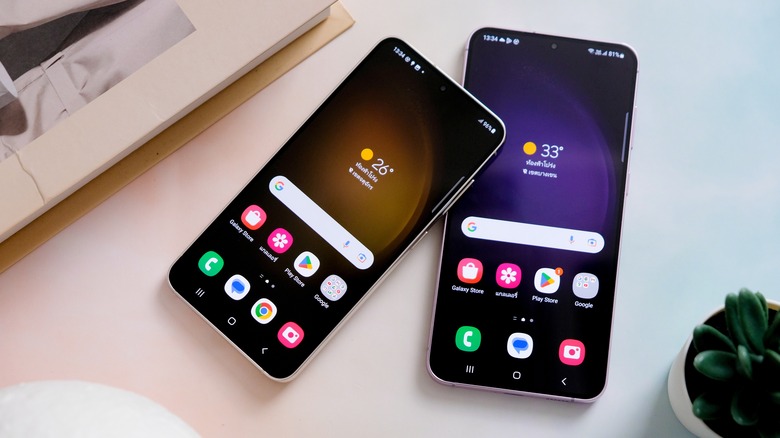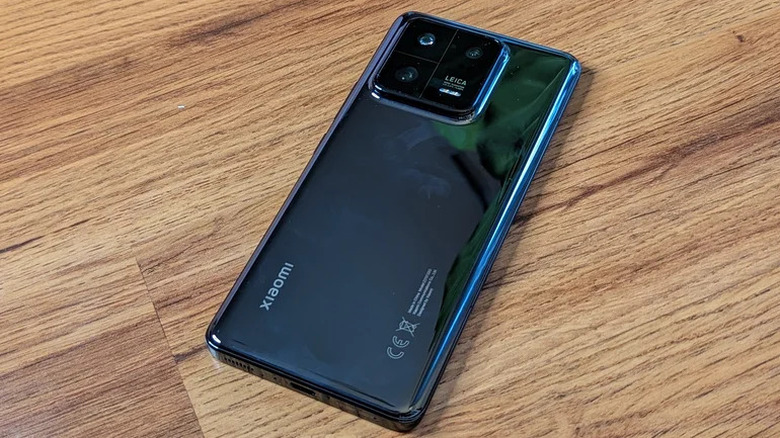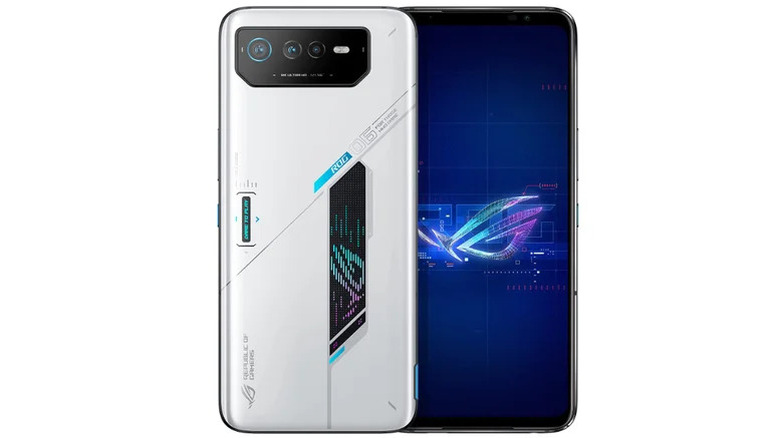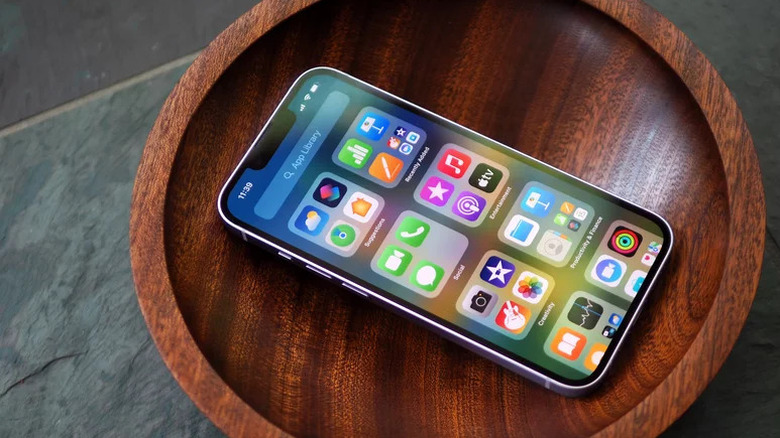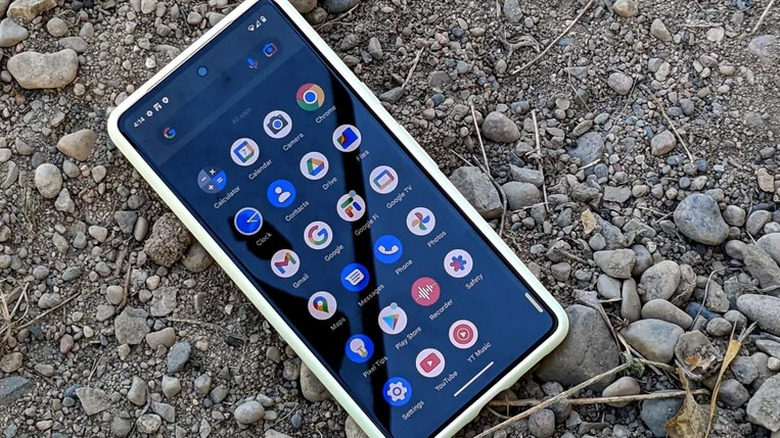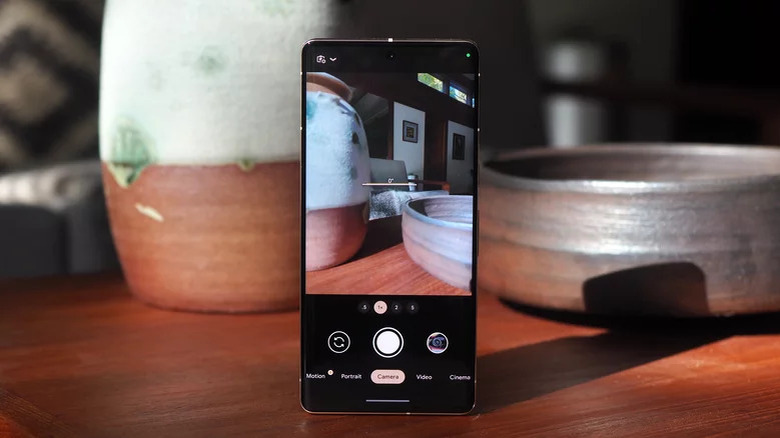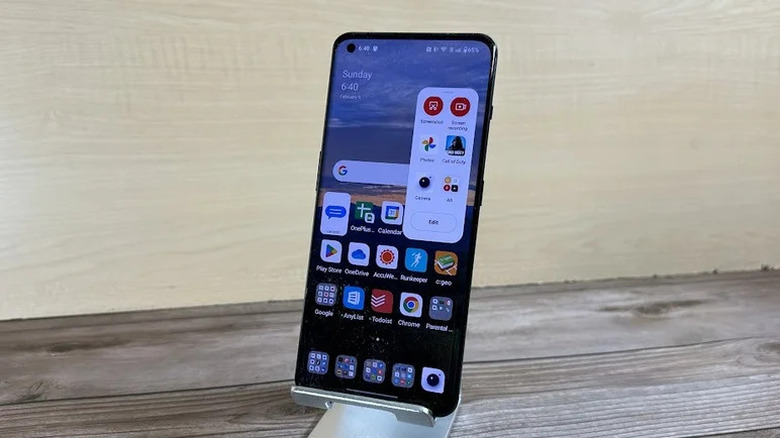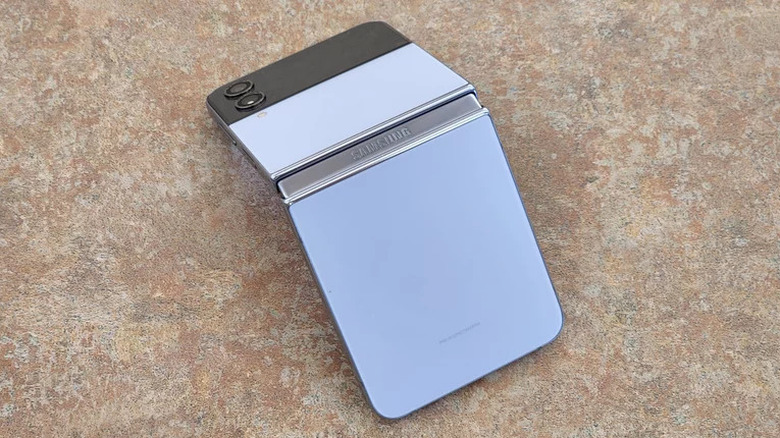7 Best Samsung Galaxy S23 Alternatives, Ranked
We may receive a commission on purchases made from links.
There's no denying that the Samsung Galaxy S23 is an amazing smartphone. Its exceptional display, processing power, and camera are all features that would excite the vast majority of smartphone enthusiasts. Having said that, the Samsung Galaxy S23 might not be for everyone, its lavish price might deter those seeking the best bang for their buck, or, the updated features might not be intriguing enough for returning Galaxy S series owners.
So we will look at the 7 best Samsung Galaxy S23 alternatives, ranking them in a price-to-performance manner. While some may be equivalent or slightly more expensive than the S23's base price of $799, we have also tried to include a few sleepers that are budget-friendly, yet manage to cover all the aspects of a high-end smartphone.
Above all, we have prioritized features such as the camera, internal performance, and build quality, so that it competes directly with the Samsung S23 to offer a similar or improved overall experience. Whilst brands such as Apple, Google, and ASUS might seem familiar to some, emerging smartphone manufacturers like OnePlus and Xiaomi might just surprise a few newcomers with what they're offering. There's never been a better time to venture into the world of high-end smartphone alternatives.
Important features to consider when choosing a Samsung Galaxy S23 alternative
Display: The display is what you'll be looking at most, so it's essential you have a good one. Larger display sizes allow for better media viewing, while increased resolutions provide a crisp image. Furthermore, the panel type affects the color, contrast, and overall image. Then there's the refresh rate that impacts the smoothness of the UI. The Samsung S23 has a 6.1-inch 2340 x 1080 Super AMOLED 120Hz display.
Camera: A higher-quality camera can produce better photos and videos, while extra features such as optical zoom, wide-angle lenses, and built-in software can increase versatility. The Samsung S23 has a 50 MP primary, 10 MP telephoto, and a 12 MP ultra-wide lens. It can also record in 8K at 30 FPS.
Battery: A larger battery size will keep your phone alive for an extended period of time. The charge speed is also important, as this can top up your battery quickly should you require immediate power. The Samsung S23 has a 3900 mAh battery and supports fast, wireless, and reverse charging. Users should be able to get up to 50% in 30 minutes via wired charging.
Processor and RAM: The chipset (CPU) and RAM affect how quickly your phone responds to commands and switches between applications. A powerful processor paired with a good amount of RAM leads to great system performance while reducing lag. The Samsung S23 has one of the best chipsets on the market, the Qualcomm Snapdragon 8 Gen 2, while also including 8 GB of RAM.
Build quality: High-end phones should be somewhat durable, including some form of water and dust resistance. The Samsung S23 has an IP68 rating – capable of being fully submerged in water for up to 1.5 meters, and protected against dust.
Xiaomi 13 Pro
The Xiaomi 12S Ultra was an extraordinary phone, that was limited to the Chinese market. Fast forward to 2023, and we have the Xiamoi 13 Pro which builds upon its predecessor and is now available worldwide. Its sleek curved design, glossy finish, and thin aluminum frame exude luxury, matched only by its premium features within.
The Xiamoi 13 has a beautiful 6.73-inch curved LTP OLED display with a 1440p resolution and 120 Hz refresh rate. The high-resolution panel brings colors to life, with deep blacks and vibrant shades that make images pop. As an LTP display, the refresh rate is remarkably adaptive, utilizing the full 120 Hz refresh rate between apps, and lowering itself to 1 Hz inside static images to save power. If that wasn't enough, there's even an adaptive resolution that can scale itself down to save more energy!
In terms of performance, the Xiaomi 13 Pro is an absolute workhorse, incorporating the latest Snapdragon 8 Gen 2 processor, 12 GB of RAM, and 256 to 512 GB of internal storage. Running on the Android 13 operating system, single and multi-core performance is similar to that of the Apple A15 Bionic, while taking things to the next level in terms of gaming benchmarks. Battery life is equally impressive, the 4,820 mAh capacity, can go from zero to charged within 20 minutes, while also supporting wireless and reverse charging too.
Of course, as the brand's flagship camera phone, the Xiaomi 13 Pro brings cutting-edge tech with the help of a 50.3 MP primary lens accompanied by an IMX 989 sensor. Furthermore, it also has a 50 MP 3.2x telephoto lens and a 50 MP ultra-wide lens with auto-focus. At an approximate price of $776, the Xiaomi 13 Pro might just be the complete package.
ASUS ROG Phone 6
Gaming phones aren't for everyone, as they tend to neglect important features such as camera quality, software polish, and good battery life. If you're looking for an alternative to the Samsung S23, then these kinds of attributes are likely at the top of your list. The ASUS ROG 6 at $899 however is an exception to the norm. Capable of playing the latest mobile games, and handling everyday tasks with ease, a flagship experience awaits within a niche category of mobile innovation.
Like many gaming phones, the ROG 6 is relatively heavy at 239 grams, but this time, for a good reason, as the internal specifications are nothing short of impressive. A Snapdragon 8+ Gen 1 chipset, 16 GB of RAM, 512 GB of storage, and a 6000 mAh battery make easy work of the most resource-intensive apps while maintaining exceptional performance and snappy response times as you navigate and multitask between the mobile UI.
The display like the futuristic spaceship design of the ROG 6 is also a spectacle to behold. ASUS has managed to combine a 2448 x 1080 resolution at 165 Hz within a 6.78-inch AMOLED panel. The result is a glorious image with vibrant colors, excellent viewing angles, and a buttery smooth refresh rate. As for gaming itself, well, titles such as "Genshin Impact" should have no problem running at 60 FPS consistently at ultra-settings.
In terms of camera quality, the ROG 6 does not disappoint. There is a 50 MP primary lens, a 13 MP ultrawide lens, and a 5 MP macro lens. Like the Samsung S23, there's even an option to record up to 8K! If gaming is a priority, the ROG 6 might just be the best hybrid out there at the moment.
Apple iPhone 14
A Samsung S23 alternative list would not be complete without including the recent iPhone, which launched in September 2022 at $799. While not much has changed since the previous generation, some incremental upgrades, along with high-quality hardware, continue to solidify the iPhone 14 as one of the top smartphones on the market today.
Now, many Android fans often compare specs at face value and never appreciate how optimized the iPhone really is. For example, some may fault Apple for using the same A15 bionic 5-core GPU chipset in the iPhone 14 that was also found in the iPhone 13 Pro. Sure, most Androids within the same price range will use a Snapdragon 8 Gen 1 or Gen 2, which boasts more cores and a higher thread count, but when looking at single-core, multi-core, and overall data processing, the A15 blows the Snapdragon out of the water. This translates to improved system efficiency, polish within apps, and high performance within gaming.
Design-wise the iPhone 14 is as premium as ever, with a 6.1-inch OLED display, 1170 x 2532 resolution, 800 nits of brightness, and an IP68 rating. Users can expect a crisp panel with excellent color accuracy, in addition to HDR 10 and Dolby Vision Support. One surprise feature was even an Emergency SOS that can be sent via satellite if you find yourself out of cellular and Wi-Fi coverage, which also activates in the event of crash detection.
Of course, the iPhone 14 isn't perfect. Its 12 MP main and ultrawide lenses are not going to capture as much detail as the S23's 50 MP primary camera, nor its 3 x telephoto lens. With that said, if you're not focusing on professional photography, the iPhone 14 is about as good as an S23 alternative can get.
Google Pixel 7
For those of you looking for a top-end Android experience on a budget, look no further than the Google Pixel 7. At just $450, you'll be surprised to find that the internal specifications are close to that of a flagship smartphone, while the build quality is extraordinary, to say the least. It's rare to find a sub $500 dollar phone, that not only has a tough aluminum frame but also an IP68 rating for both dust and water resistance. That means full water submergence for up to 1.5 meters for 30 minutes, just like the Apple iPhone 14 and Samsung Galaxy S23!
When looking at the camera, that's where things start to get really interesting with the Pixel 7. Like many top-of-the-line phones, there is a dual camera setup, namely, a 50 MP wide lens, and a 12 MP ultrawide lens, with a 10.8 MP front-facing camera. Utilizing the recent Google Tensor G2 chipset, users can sharpen their photos using features such as the Google Unblur system. Moreover, the camera can distinguish the edges of objects with ease, capturing the finest of details up close, which is impressive considering there's no dedicated macro lens.
The only drawback to the Pixel 7 might just be its FHD 1080p display. While it is spacious at 6.3 inches, the panel is capped at a 90 Hz refresh rate, which isn't the best for those used to the "Super Fluid" nature of high-end OnePlus and Samsung devices. Nevertheless, there is wireless charging and 5G connectivity, so what the Pixel 7 lacks in display quality, it surely makes up in overall value for money.
Google Pixel 7 Pro
If the Google Pixel 7 sparked your interest, then the Pixel 7 Pro might seal the deal. Starting at $750, the Pixel 7 Pro is the bigger brother, with performance upgrades that make it a true contender to the Samsung S23, and dare we say the S23 Ultra.
As mentioned above, one of the lacking features of the original Pixel 7 was its 1080p display. The Pixel 7 Pro ups the ante by including a massive 6.8-inch QHD OLED screen that is crisp and smooth due to its increased 120 Hz refresh rate. Furthermore, things are a whole lot brighter, as the Pixel 7 Pro measures 1500 nits of brightness, with an aspect ratio of 19.5:9.
The Pixel 7 Pro also has 12 GB of RAM when compared to the 8 GB of RAM included in both the Google Pixel 7 and Samsung S23, alongside a larger 5000 mAh battery. Google claims you could get up to 72 hours of battery life using their Extreme Battery Saver, but these values should drop to about 24 hours with regular use. That's not to say it isn't impressive, the 5000 mAh capacity is the same as the Samsung Galaxy S23 Ultra, and beyond the entry-level S23's 3,900 mAh battery.
Another improvement on the Google Pixel 7 Pro is its triple camera setup. In addition to the 50 MP wide lens, and 12 MP ultrawide lens found on the Pixel 7, the Pro includes a 48 MP telephoto lens. When digitally zooming, users will have access to a 5x optical zoom, as well as a 30x Super Res Zoom. The Pixel 7 Pro, therefore, continues to exceed expectations nearing the S23 Ultra, but at a far more affordable price point.
OnePlus 11 5G
Every once in a while, a phone comes along that is overlooked by mobile enthusiasts. Perhaps due to brand prejudice or poor marketing, these smartphones aren't as highly sought after as they should be. The OnePlus 11 5G is a prime example of this, its highly polished design and robust features put it on par with the Samsung S23 and S23 Plus, but at a significantly cheaper price of just $699 (8 GB/128 GB) and $799 (16 GB/256 GB).
The OnePlus 11 5G manages to balance luxury and comfort with an aluminum chassis and rounded-edge design. While it isn't the smallest smartphone out there, its 205-gram weight and 8.5 mm thickness are impressive considering the device has a 6.7-inch screen. Speaking of the display, users can expect a 2K "Super Fluid" AMOLED with a 120 Hz refresh rate. This is bundled with the Qualcomm Snapdragon 8 Gen 2 chipset, making the OnePlus 11 exceptionally fast and responsive. General app use should be flawless without delays or lag, while games such as "Call of Duty: Mobile" should run smoothly.
In terms of picture quality, the OnePlus 11 sports a triple-camera setup including a 50 MP main camera, 48 MP ultrawide lens, and a 32 MP portrait sensor with 2x optical zoom. The 50 MP in particular is known to pull in a lot of light in dark areas, whereas the 48 MP lens can expand your field of view. Therefore, if the Google Pixel 7 Pro piques your curiosity, and you want to save a few dollars, the OnePlus 11 5G might be a good middle ground.
Samsung Galaxy Z Flip 4
The Samsung Galaxy Z Flip 4 might just be the most unique phone on this list. Its laptop-like layout makes it superb for front-facing apps such as Skype, Instagram, TikTok, and Microsoft Teams. With such versatility, it's no surprise that the Galaxy Flip 4 starts at $899, but with this, comes serious features and exceptional build quality to match.
Now, some may ask, how strong can a flip phone really be these days? The Galaxy Flip 4 includes Samsung's Armor Aluminum frame, Gorilla Glass Victus Plus, a pre-installed screen protector, and an IPX8 water-resistant rating. In other words, it's as tough as any premium smartphone nowadays, or better!
Once build quality fears have subsided, the real value of the Flip 4 is found in its dual-screen design. For starters, the cover display is a 1.9-inch screen that can view notifications and control media. This adds convenience for those who constantly find themselves on the go, mimicking the ease of the once-popular iPod. Inside things are more impressive, the primary FHD 6.7-inch Super AMOLED display is paired with a fluid 120 Hz refresh rate and HDR10+ support.
Performance-wise, the Galaxy Flip 4 runs on a Snapdragon 8+ Gen 1 chipset, 8 GB of RAM, and storage capacities ranging from 128 GB to 512 GB. While apps should work flawlessly, the camera is lackluster when compared to others in this price range. A 12 MP wide and 12 MP ultrawide lens will definitely disappoint some. There is however a hands-free 10 MP selfie camera and 4K video recording, so content creation and social media uploads just got a whole lot easier!

